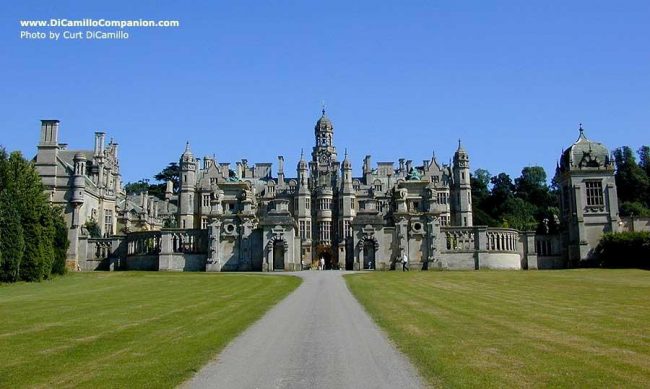
The entrance facade
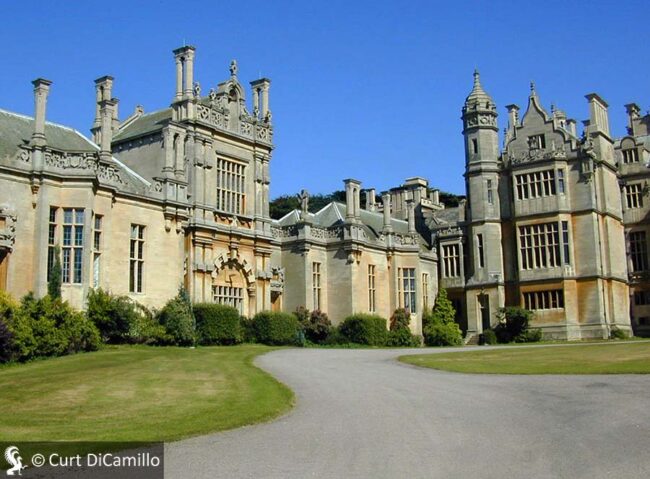
The entrance courtyard
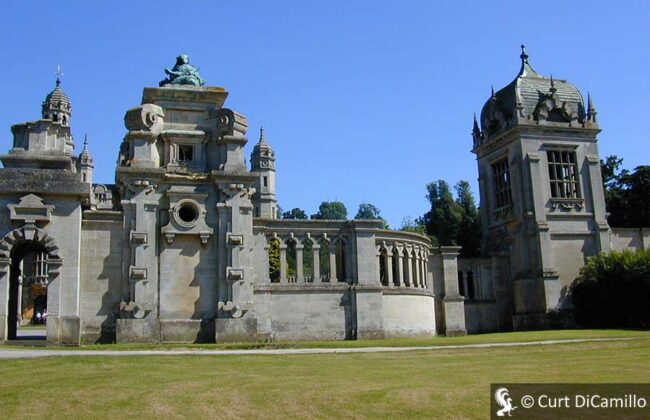
Outer elements of the entrance courtyard
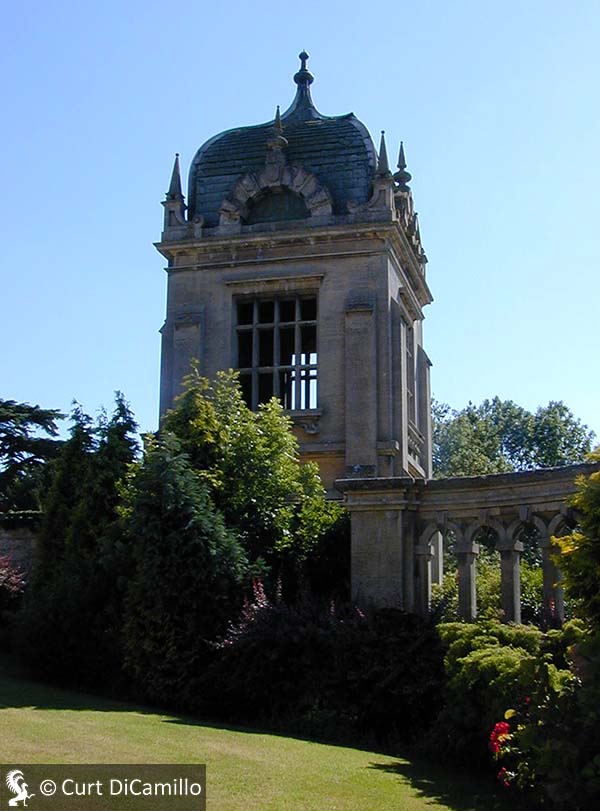
One of the towers of the entrance courtyard
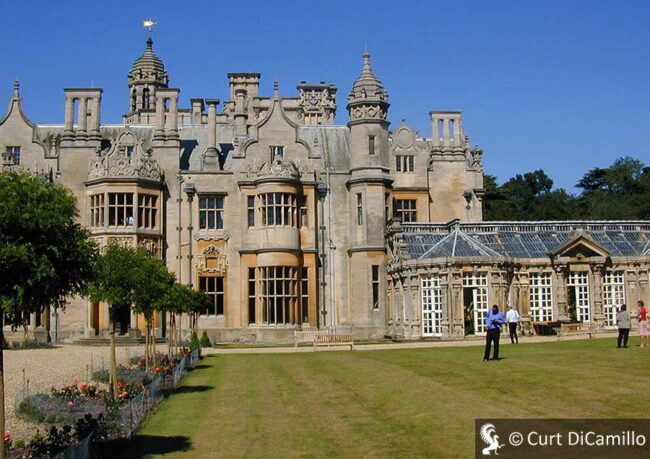
The house and the conservatory (right)
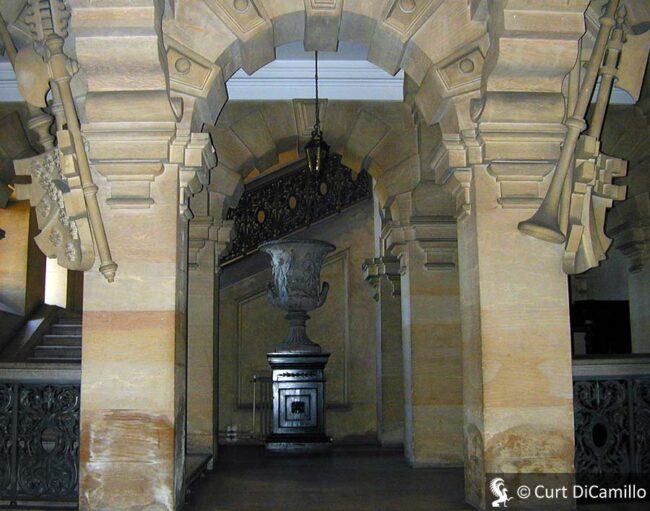
The entrance hall
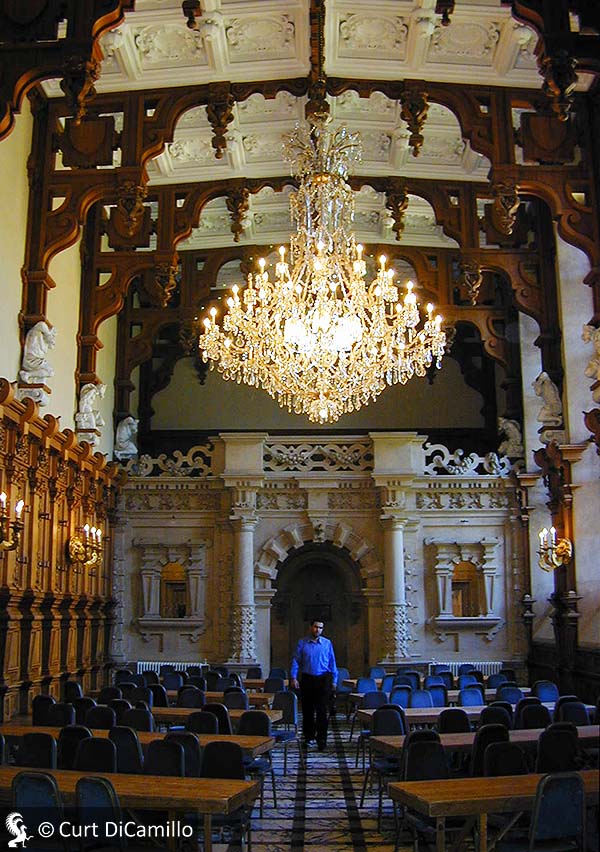
The great hall
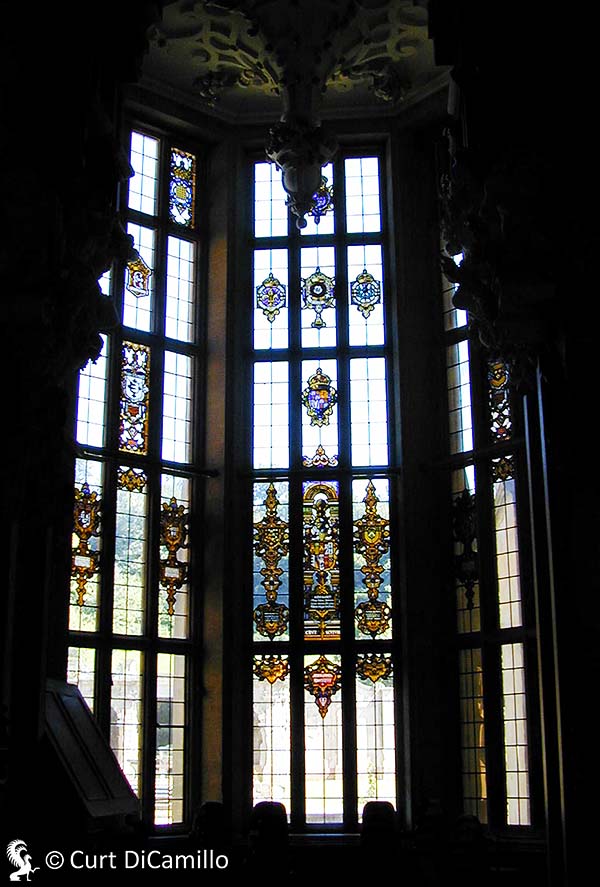
Oriel window in the great hall
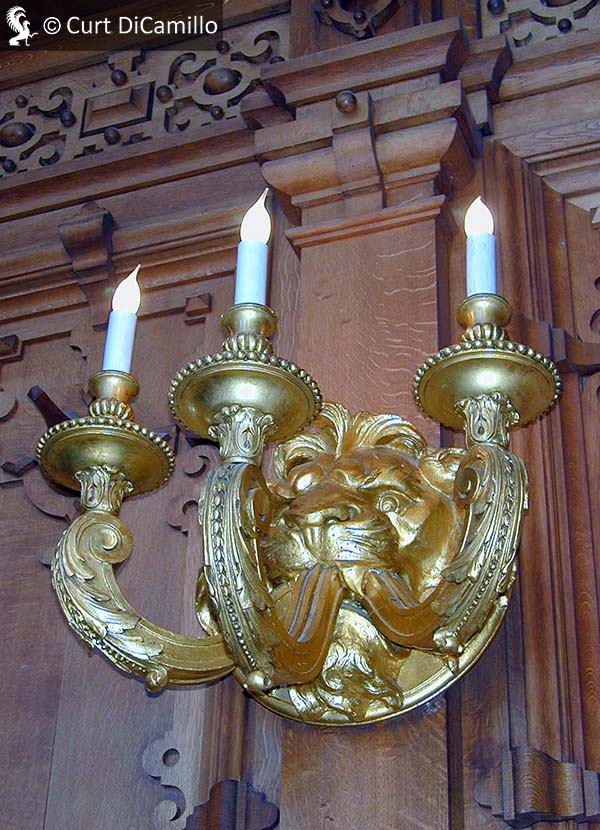
Lion sconce in the great hall
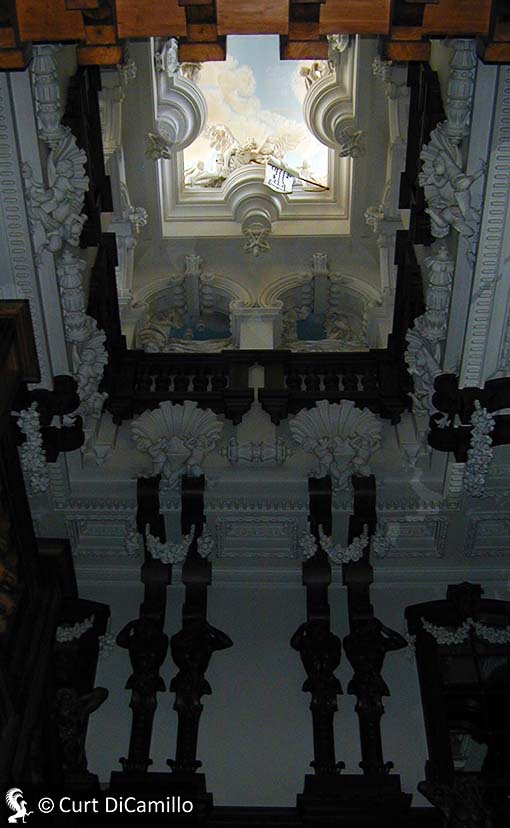
The cedar staircase ceiling
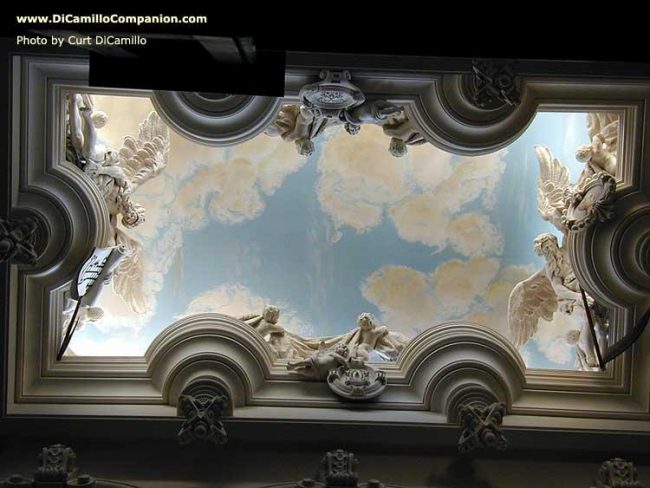
The cedar staircase ceiling
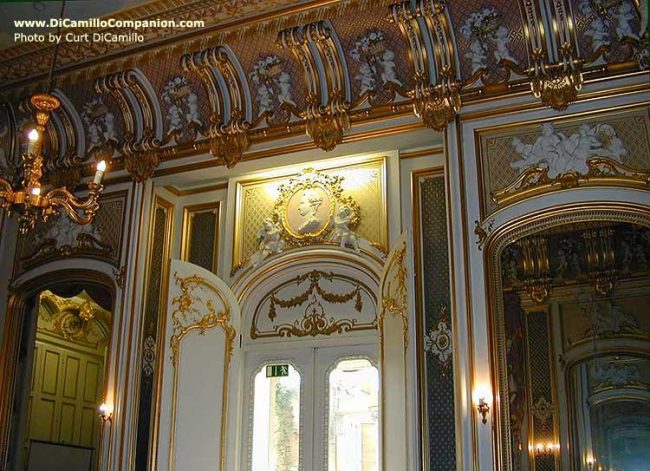
The gold drawing room
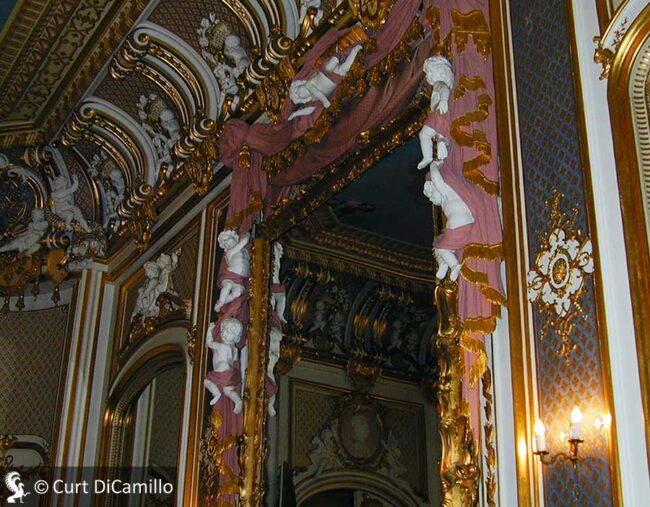
The gold drawing room
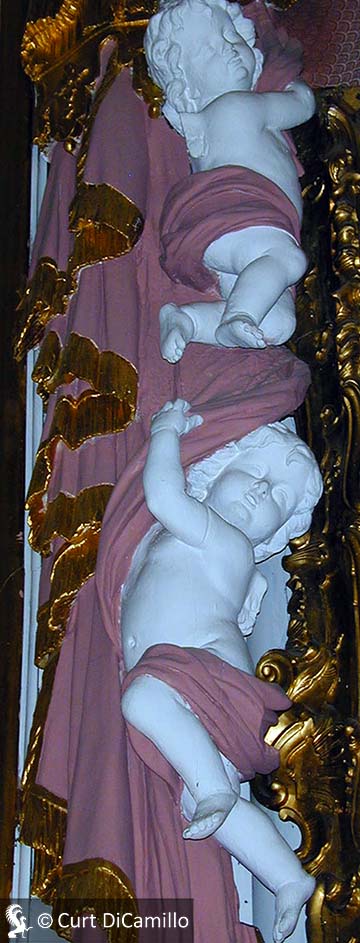
Detail of plasterwork in the gold drawing room
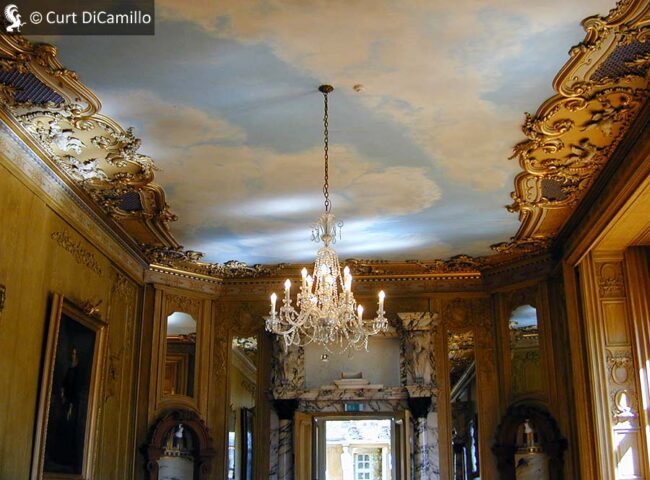
The long gallery
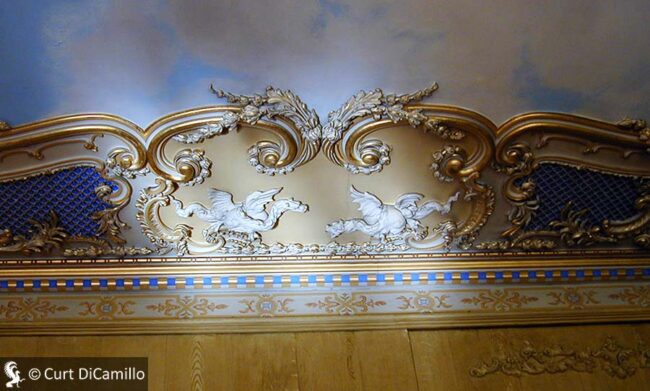
Ceiling plasterwork in the long gallery
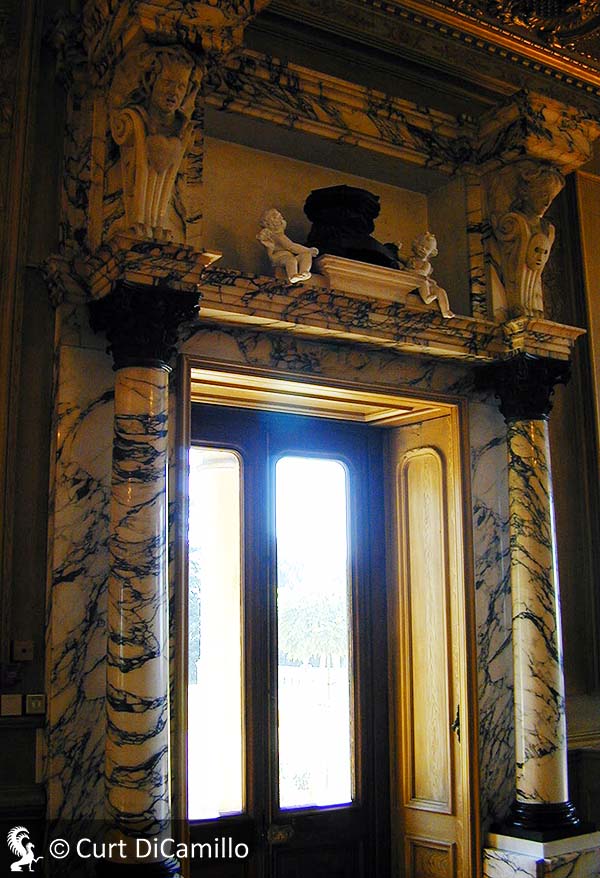
The long gallery
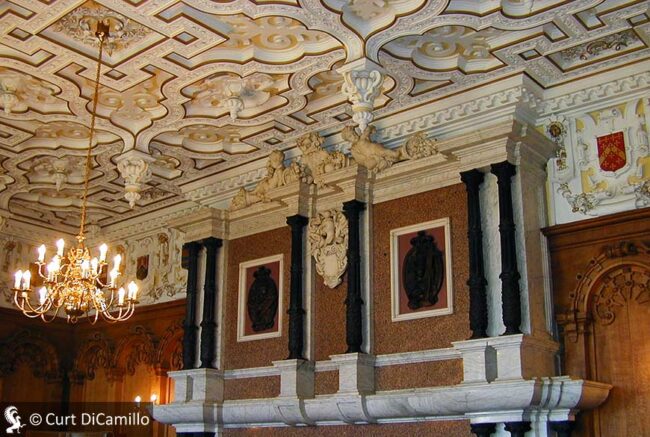
The dining room
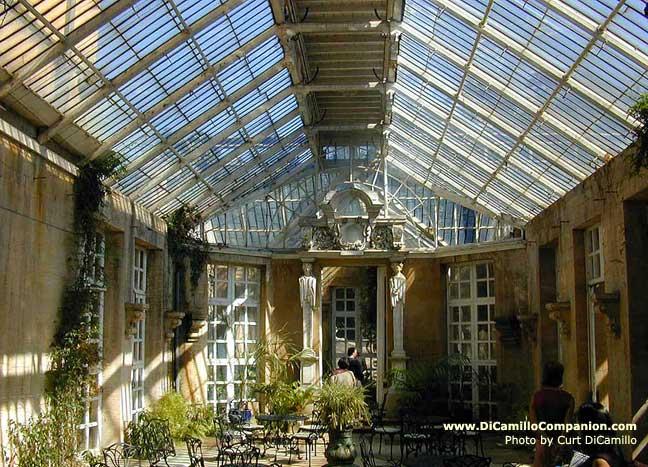
The conservatory
Earlier Houses: The current house is the second by the name of Harlaxton Manor; the first, a 14th century house built on a different site in Harlaxton Village, was used as a hunting lodge by John of Gaunt. It was demolished by Gregory Gregory in 1857.
Built / Designed For: Gregory Gregory
House & Family History: The village of Harlaxton is first recorded in the "Domesday Book" as Harleston. The current House is the second by the name of Harlaxton Manor; the first, a 14th century house built on a different site in Harlaxton Village, was used as a hunting lodge by John of Gaunt. By 1475 the de Ligne family had purchased the Estate; by 1781 the House was abandoned. In the early 19th century the Harlaxton Estate was inherited by Gregory Gregory, a wealthy Nottinghamshire businessman. Gregory built the current over-the-top house between 1831 and 1855, helping to establish the popularity of Jacobethan architecture (in 1857 Gregory had the original 14th century Harlaxton Manor demolished). Gregory was unmarried and, at his death in 1855, Harlaxton was inherited by a cousin, George Gregory; in 1860 it passed to a distant relative named John Sherwin-Gregory. Upon the death of Sherwin-Gregory's wife in 1892, Harlaxton passed to his godson, Thomas Pearson-Gregory, who allowed the House to fall into ruin. After passing through a series of unsympathetic owners, by 1935 Harlaxton lay abandoned. In 1937 the Estate was purchased by Violet Van der Elst, a businesswoman and inventor who made a fortune by developing the first brushless shaving cream. Mrs. Van der Elst was also famous for her high profile campaign against capital punishment, using Harlaxton as a center for meetings for the abolishment of capital punishment. She restored Harlaxton after a long period of neglect, even installing electricity! The House, built of Ancaster stone, is an amazing blending of Baroque, Gothic, and Jacobethan styles. The Cedar Staircase is the interior for which Harlaxton is most famous – the neo-Baroque room, with its clerestory, is an exceptionally fine example of 19th century stucco work, probably executed by the firm of Francis Bernasconi of London. The design of the oak-paneled Great Hall, complete with a minstrel's gallery, was inspired by medieval great halls and is notable for the stone screen through which visitors enter the room, one of only four in Britain. The crystal chandelier in the Great Hall was originally designed for a palace in Madrid and was purchased by Mrs. Van der Elst at the outbreak of the Spanish Civil War (during the time the Jesuits occupied Harlaxton the Great Hall was used as a chapel). The Long Gallery originally displayed a fine set of Beauvais tapestries, long since sold. Four of the Seven Deadly Sins (Deceit, Jealousy, Pride and Malice) can be seen depicted in marble over two of the Long Gallery doorways. There is also a hidden doorway in the paneling at the far end of the room which gives access to a spiral staircase that would have been used for the servants' access. During World War II Harlaxton was requisitioned by the Royal Air Force and served as the officers' mess for RAF Harlaxton and, from 1943, home to a company of the 1st Battalion of the British Airborne Division; it's from this period that the emblem in the Pegasus Courtyard dates. In 1948 Harlaxton was sold by Mrs. Van der Elst to The Society of Jesus, who used it as a novitiate until 1965, when they sold the House to Stanford University (the Jesuits retained rights to some of the land). Stanford operated Harlaxton as "Stanford in Britain" until 1968, when they vacated, leaving the House unoccupied until 1971, when the University of Evansville, Indiana, began using Harlaxton as their British campus. Initially operated as the university's overseas study center, it later became Harlaxton College, which it remains today. Since 1984 Harlaxton has been the site of the annual Harlaxton Symposium, an interdisciplinary symposium on medieval art, literature, and architecture. Each summer Harlaxton hosts the Harlaxton International Chamber Music Festival. Until 1986, when he sold the House to the University, Harlaxton was owned by William Ridgway, a trustee of the University of Evansville.
Comments: "Harlaxton must be seen to be believed and even when one has seen it, it is not always easy to believe it," Mark Girouard, writing in "The Victorian Country House." Harlaxton is considered Anthony Salvin's masterpiece.
Garden & Outbuildings: The Conservatory was a later addition to the House. By the late 1970s it had become derelict and was one of the first parts of the House to be restored. The Royal Botanic Gardens, Kew, donated a number of plants to celebrate the Conservatory's restoration and reopening. Today it is one of the largest conservatories of its kind in the Midlands. The Harlaxton Lions (two stone lions) originally came from Witley Court near Worcester.
Country Life: Apr 11, 1957.
Title: Biographical Dictionary of British Architects, 1600-1840, A - SOFTBACK
Author: Colvin, Howard
Year Published: 1995
Publisher: New Haven: Yale University Press
ISBN: 0300072074
Book Type: Softback
House Listed: Grade I
Park Listed: Grade II*
Past Seat / Home of: SEATED AT EARLIER HOUSE: John of Gaunt, 14th century. de Ligne family, 15th century. SEATED AT CURRENT HOUSE: Gregory de Ligne Gregory, 1837-55; George Gregory, 1855-60; John Sherwin-Gregory (and his widow), 1860-92; Thomas Pearson-Gregory, 1892-193?. Violet Van der Elst, 1937-48.
Current Ownership Type: School
Primary Current Ownership Use: School
Ownership Details: Since 1971 Harlaxton College, the Overseas Study Center of the University of Evansville, Indiana.
House Open to Public: No
Phone: 01476-403-000
Fax: 01476-403-030
Email: [email protected]
Website: http://www.harlaxton.ac.uk
Historic Houses Member: No